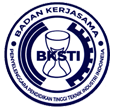Six Sigma Implementation in Connector and Terminals Manufacturing Company : A Case Study
Abstract
This research was conducted at an electronic component company located in Bekasi, Indonesia. Quality is a characteristic of this company, with the company's mission, one of which is eliminating customer claims. The application of the Six Sigma DMAIC method is expected to be used as a guideline for making durable product quality and reducing the high variation in the manufacturing process for bullet type products. This study aims to determine the variables of the factors that can affect the retention force value of bullet type terminal products, using the Taguchi method experiment. The research results with the Taguchi method experiment found that three variables affect the product retention force value, namely the largest outer diameter dimension, the most significant input diameter size dimension, and the smallest length position size dimension. After monitoring and data collection on the retention force dimension, it was found that the overall Cp process capability was 3.38, and Cpk was 1.58, so it could be said that the machine performance was excellent and stable.
Keywords
Full Text:
PDFReferences
Antony, J. (2006). Six sigma for service processes. Business Process Management Journal, 12(2), 234–248. https://doi.org/10.1108/14637150610657558
Antony, J., & Banuelas, R. (2002). Key ingredients for the effective implementation of Six Sigma program. Measuring Business Excellence, 6(4), 20–27. https://doi.org/10.1108/13683040210451679
Brun, A. (2011). Critical success factors of Six Sigma implementations in Italian companies. International Journal of Production Economics, 131(1), 158–164. https://doi.org/10.1016/j.ijpe.2010.05.008
Chen, K. S., Chen, S. C., & Li, R. K. (2002). Process Quality Analysis of Products. The International Journal of Advanced Manufacturing Technology, 19(8), 623–628. https://doi.org/10.1007/s001700200068
Chen, K. S., Ouyang, L. Y., Hsu, C. H., & Wu, C. C. (2009). The communion bridge to Six Sigma and process capability indices. Quality and Quantity, 43(3), 463–469. https://doi.org/10.1007/s11135-007-9123-1.
Darmawan, H., Hasibuan, S., & Hardi Purba, H. (2018). Application of Kaizen Concept with 8 Steps PDCA to Reduce in Line Defect at Pasting Process: A Case Study in Automotive Battery. International Journal of Advances in Scientific Research and Engineering, 4(8), 97–107. https://doi.org/10.31695/ijasre.2018.32800
Erbiyik, H., & Saru, M. (2015). Six Sigma Implementations in Supply Chain: An Application for an Automotive Subsidiary Industry in Bursa in Turkey. Procedia - Social and Behavioral Sciences, 195(July), 2556–2565. https://doi.org/10.1016/j.sbspro.2015.06.447
Gupta, V., Jain, R., Meena, M. L., & Dangayach, G. S. (2018). Six-sigma application in tire-manufacturing company: a case study. Journal of Industrial Engineering International, 14(3), 511–520. https://doi.org/10.1007/s40092-017-0234-6
Hekmatpanah, M., Sadroddin, M., Shahbaz, S., Mokhtari, F., & Fadavinia, F. (2008). Six Sigma process and its impact on the organizational productivity. International Journal of Economics and Management Engineering, 2(7), 323–327. https://doi.org/10.5281/zenodo.1070099
Hernadewita, H., Ismail, M., Nurdin, M., & Kusumah, L. (2019). Improvement of magazine production quality using Six Sigma method : case study of a PT.XYZ. Journal of Applied Research on Industrial Engineering, 6(1), 71–79. https://doi.org/10.22105/JARIE.2019.159327.1066
Jacob, A., Windhuber, K., Ranke, D., & Lanza, G. (2018). Planning, Evaluation and Optimization of Product Design and Manufacturing Technology Chains for New Product and Production Technologies on the Example of Additive Manufacturing. Procedia CIRP, 70, 108–113. https://doi.org/10.1016/j.procir.2018.02.049
Kholil, M., & Pambudi, T. (2014). Implementasi Lean Six Sigma Dalam Peningkatan Kualitas Dengan Mengurangi Produk Cacat Ng Drop Di Mesin Final Test Produk Hl 4.8 Di PT. SSi. Penelitian dan Aplikasi Sistem dan Teknik Industri, 8(1), 182844. https://publikasi.mercubuana.ac.id/index.php/pasti/article/view/431
Mast, J. De, & Trip, A. (2005). Gauge R&R Studies for Destructive Measurements. Journal of Quality Technology, 37(1), 40–49. https://doi.org/10.1080/00224065.2005.11980299
Nugroho, R., Marwanto, A., & Hasibuan, S. (2017). Reduce Product Defect in Stainless Steel Production Using Yield Management Method and PDCA. International Journal of New Technology and Research, 3(11), 263201. https://www.ijntr.org/download_data/IJNTR03110043.pdf
Pereira, A. M. H., Silva, M. R., Domingues, M. A. G., & Sá, J. C. (2019). Lean six sigma approach to improve the production process in the mould industry: A case study. Quality Innovation Prosperity, 23(3), 103–121. https://doi.org/10.12776/QIP.V23I3.1334
Pop, A. B., Ţîţu, M. A., Oprean, C., & Ţîţu, Ş. (2018). Applying Experimental Research Management to a Technological Process using Taguchi’s Method. Procedia - Social and Behavioral Sciences, 238, 355–363. https://doi.org/10.1016/j.sbspro.2018.04.012
Rofiudin, M., & Santoso, D. (2018). Improve Capability Process to Optimizing Productivity : Case Study Line Process Packing Assembly. Operations Excellence, 10(2), 175–182. https://publikasi.mercubuana.ac.id/index.php/oe/article/view/3828
Sarkar, S. A., Mukhopadhyay, A. R., & Ghosh, S. K. (2013). Improvement of claim processing cycle time through lean six sigma methodology. International Journal of Lean Six Sigma, 4(2), 171–183. https://doi.org/10.1108/20401461311319347
Soejanto, I. (2009). Desain Eksperimen dengan metode Taguchi (1st ed.). Graha Ilmu.
Syafwiratama, O., Hamsal, M., & Purba, H. H. (2017). Reducing the nonconforming products by using the six sigma method: A case study of a polyester short cut fiber manufacturing in Indonesia. Management Science Letters, 7(3), 153–162. https://doi.org/10.5267/j.msl.2016.12.001
Thomas, A., Barton, R., & Chuke‐Okafor, C. (2009). Applying lean six sigma in a small engineering company – a model for change. Journal of Manufacturing Technology Management, 20(113–129). https://doi.org/10.1108/17410380910925433
Valles, A., Sanchez, J., Noriega, S., & Gómez Nuñez, B. (2009). Implementation of Six Sigma in a manufacturing process: A case study. International Journal of Industrial Engineering : Theory Applications and Practice, 16(3), 171–181. https://journals.sfu.ca/ijietap/index.php/ijie/article/view/263
Virender Narula, S. G., Narula, V., & Grover, S. (2015). Six Sigma : Literature Review Implications for Future Research. International Journal of Industrial Engineering & Production Research, 26(1), 13–26. https://doi.org/10.1016/j.ijproman.2010.01.006
DOI: http://dx.doi.org/10.22441/ijiem.v1i1.9305
Refbacks
- There are currently no refbacks.

This work is licensed under a Creative Commons Attribution-NonCommercial 4.0 International License.
IJIEM - Indonesian Journal of Industrial Engineering & Management
Program Pascasarjana Magister Teknik Industri Universitas Mercu Buana
Kampus Menteng - Gedung Tedja Buana, Floor 4th
Jl. Menteng Raya No. 29 Jakarta Pusat- Indonesia
Tlp.: +62 21 31935454 Fax: +62 21 31934474
http://publikasi.mercubuana.ac.id/index.php/ijiem
Email: [email protected]

This work is licensed under a Creative Commons Attribution-NonCommercial 4.0 International License.
The journal is indexed by:





1.png)
.png)
.png)
.png)







